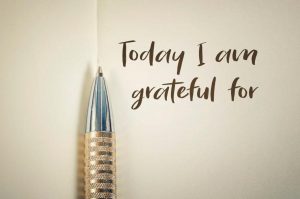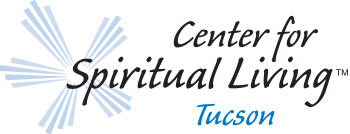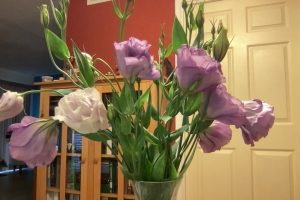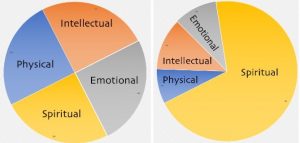Beyond Beyond Gratitude
Rev. Janis just concluded her Beyond Gratitude class this week. The homework for  week 1 included doing a gratitude practice of listing three things you were grateful for each day. “Okay,” I said to myself. “I’ll start a new journal. Again.”
week 1 included doing a gratitude practice of listing three things you were grateful for each day. “Okay,” I said to myself. “I’ll start a new journal. Again.”
Like many of you, I have started such a practice many times. I keep it up for a few weeks or months, then record less frequently until I stop altogether. I think of 3 things I’m grateful for and list them, trying not to repeat myself. Once again, I began making my list of three things that I noticed each day for which I am thankful.
On Veteran’s Day, I thought I should put veterans on my list, but I had already recorded three things. I looked at the three items to decide which one to take off and substitute with veterans. I didn’t want to replace any of the items with veterans. This made me look at why I included items on my list. Each of the items I included made me feel something. That day I wasn’t feeling any particular emotion related to any veteran in particular or veterans in general, so they didn’t make it to the list. The next day I meditated on what it was about veterans that I was grateful for. Now I had a feeling to go with the thought and veterans made it on the list that day.
Instead of just making a list I’m currently keeping an actual gratitude journal. I write down three things, one at a time. Then I write down why I’m grateful for each one and how each makes me feel. This has given my gratitude practice more meaning.
Also during that week 1 class, Rev. Janis suggested we include things from three different categories:
1 – tangibles. (what you can see, touch, taste, smell, hear)
2 – invisibles, but tangibles (like oxygen/air, lungs/breath, kidneys, spleen…)
3 – intangibles (like safety, contentment, creativity…)
Previously, the things that made it to my list were mostly from the first category. Thinking about and including things from the other two categories has broadened my practice in another way.
As suggested by Dr. Karmen Smith and reiterated by Rev. Janis, to take my gratitude practice to an even higher level I reflect on difficult experiences and try to find a reason to be grateful. Knowing that all happens for my good, I ask to be shown the good. Often this is not possible to see while experiencing the situation, but recalling events from the past that are over and done with I am usually able to find something there to be grateful for if only that it is in the past.
Taking this class has allowed me to take my gratitude practice beyond anything I have done in the past. I think I will stick with this practice longer this time around because of this.
I love that our Center offers a variety of classes on a regular basis. Participating in the classes, I always discover something that I can incorporate into my daily life to make it fuller, deeper, bigger, etc. If you haven’t taken a class lately, I encourage you to do so. Allow yourself to go beyond.
–Janet Salese










